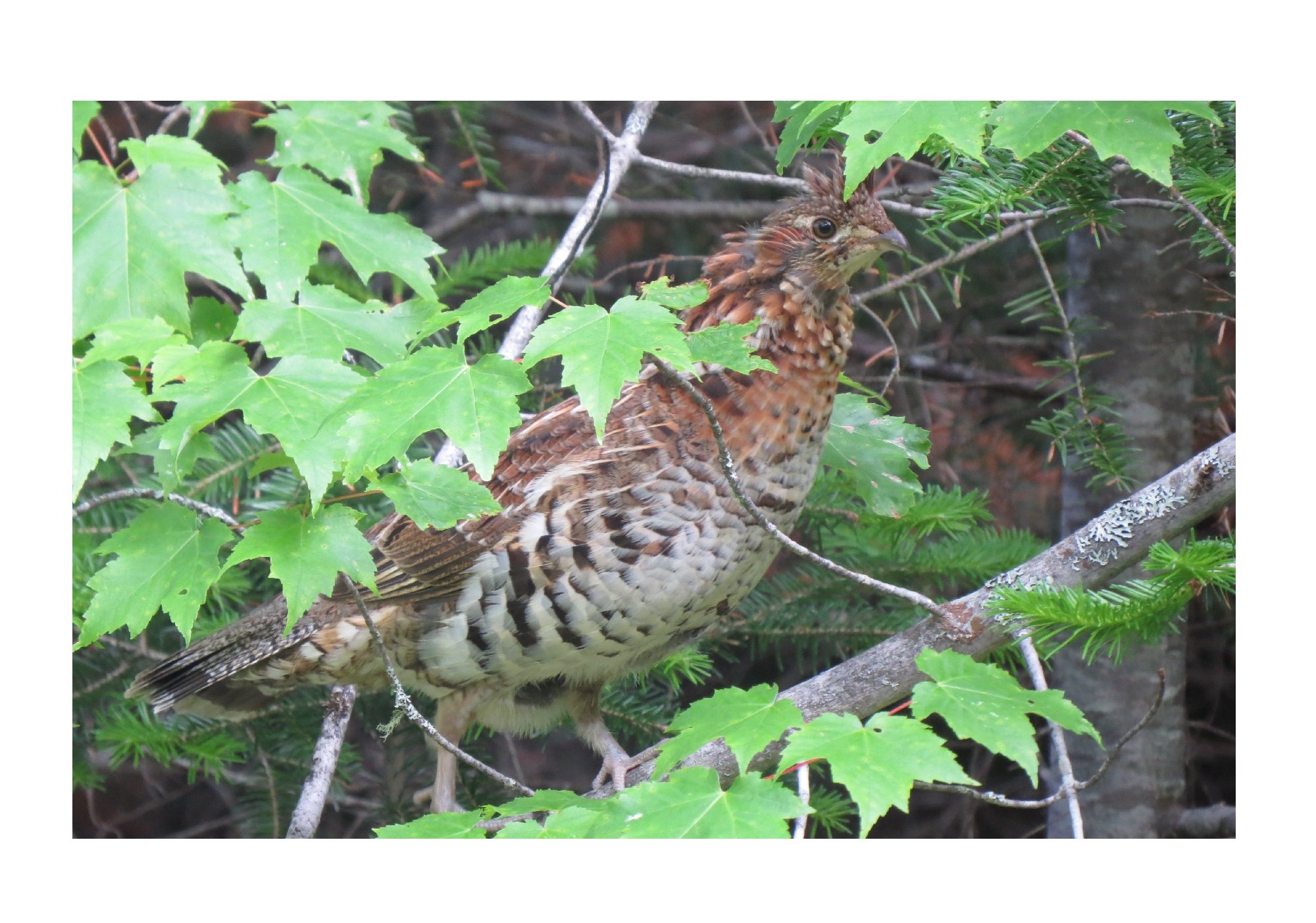
You are walking on a wooded path in Pennsylvania. Everything is quiet and serene; a few bird calls here and there, the low buzzing of insects, the swish of a breeze through summer leaves are all you can hear. As you walk on, a shape suddenly appears on the trail before you and before you can even take another step you hear what could only be a small explosion as a pair of brown wings takes off in front of you, startling you out of your wits and making you dive for cover. No, you have not stumbled upon a Civil War re-enactment, but a startled Ruffed Grouse, the state bird of Pennsylvania.
The legislature named the grouse the state bird in 1931, and as it is a game bird it is legal to hunt them in the fall and winter seasons. In addition to the loud noise they can make when startled, male Ruffed Grouse use “drumming” to attract females. The sound is almost like a car engine, created when they beat their wings while standing on a log or stone. Other than that the grouse are mostly silent, cooing or whining to communicate with their chicks or before flushing.
Ruffed Grouse forage for vegetation on the forest floor, and their brown plumage combined with their general silence can make them very difficult to see. Though Pennsylvania is in the southern part of their range, grouse can digest twigs and buds, allowing them to survive winters in the northern United States and throughout Canada. They live in deciduous forests where they are found in Pennsylvania, and prefer early-successional forests.
Though grouse are not on any watch list and are categorized as an IUCN species of “least concern,” their populations are still on the decline, and because they are popular for hunting many states have imposed bag limits and shortened hunting seasons. As they prefer young forests, reduced logging can actually be a detriment to their population numbers. Still, their population is estimated at around 18 million individuals, making them a great bird to see in the woods!













I didn’t know they were the state bird of Pennsylvania. For me, very fitting. Some of my first great birding experiences were at my aunt and uncle’s place in Bradford country when I was eight years old. I can still recall my uncle taking us on a hike through the woods and flushing many Ruffed Grouse. I can still see him raising his arms in excitement as he proclaimed, “Ruffed Grouse! Ruffed Grouse!” as they flushed around us. A happy, unexpected lifer.